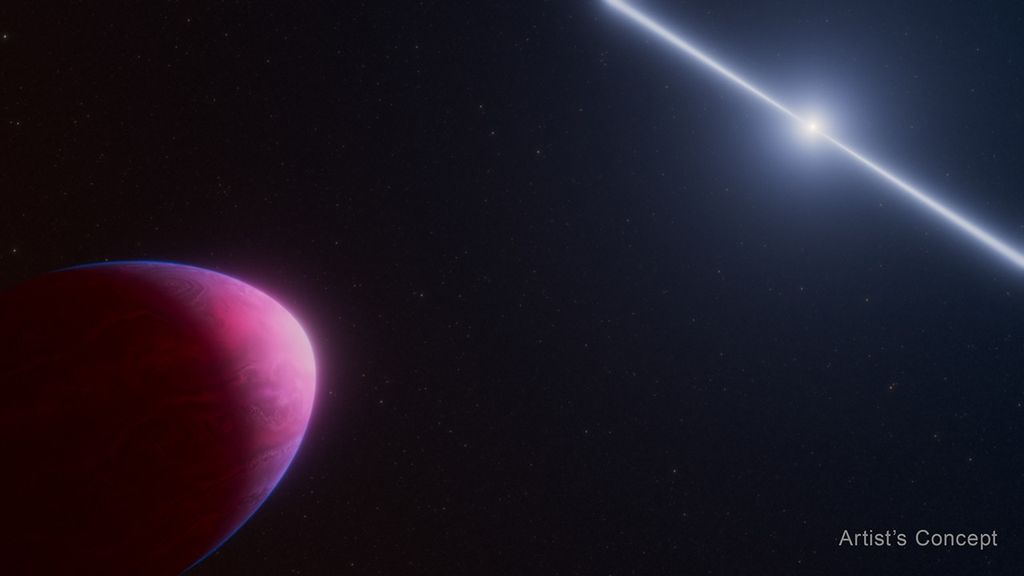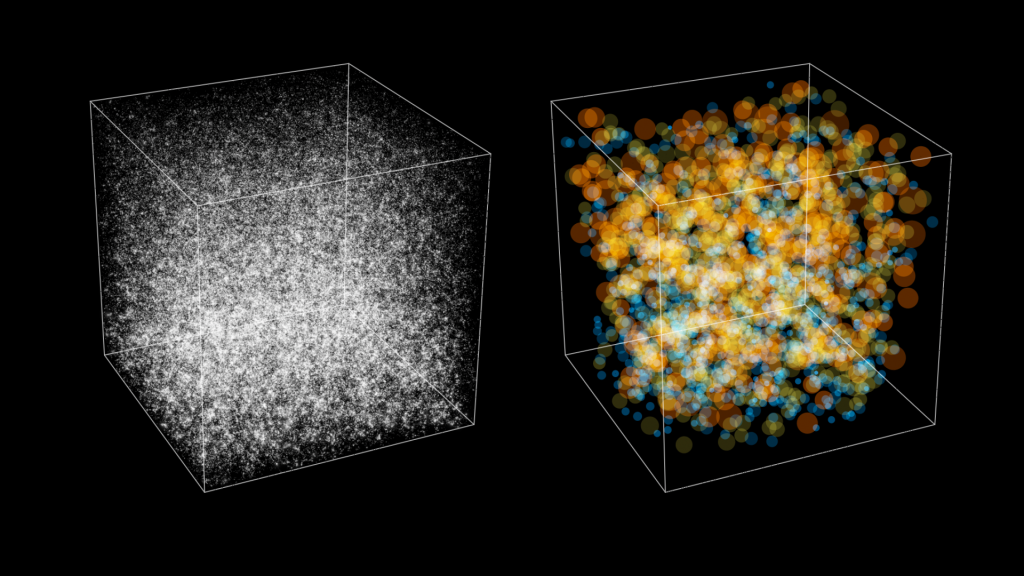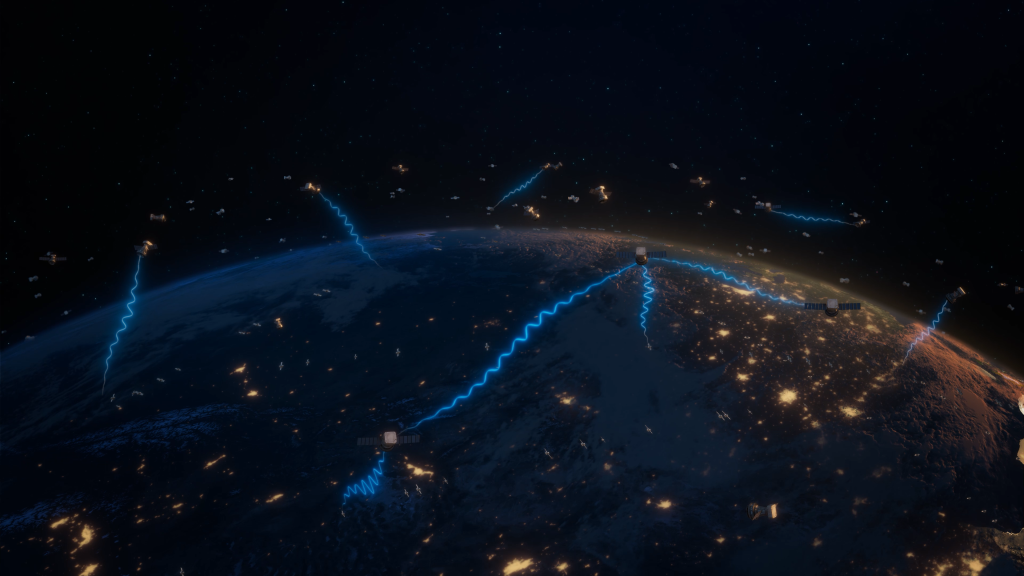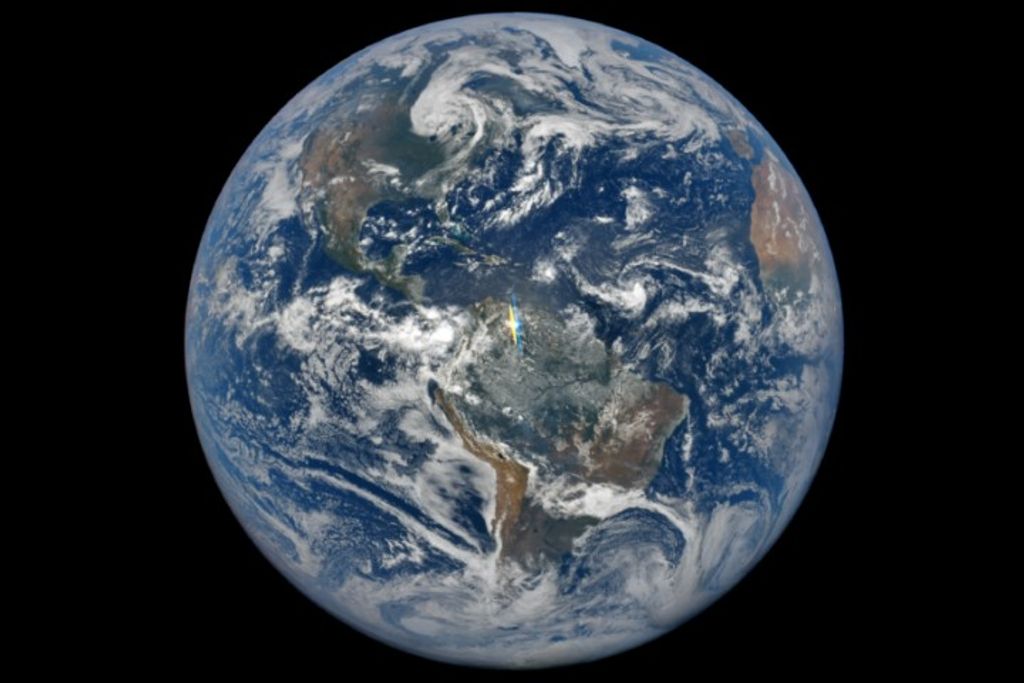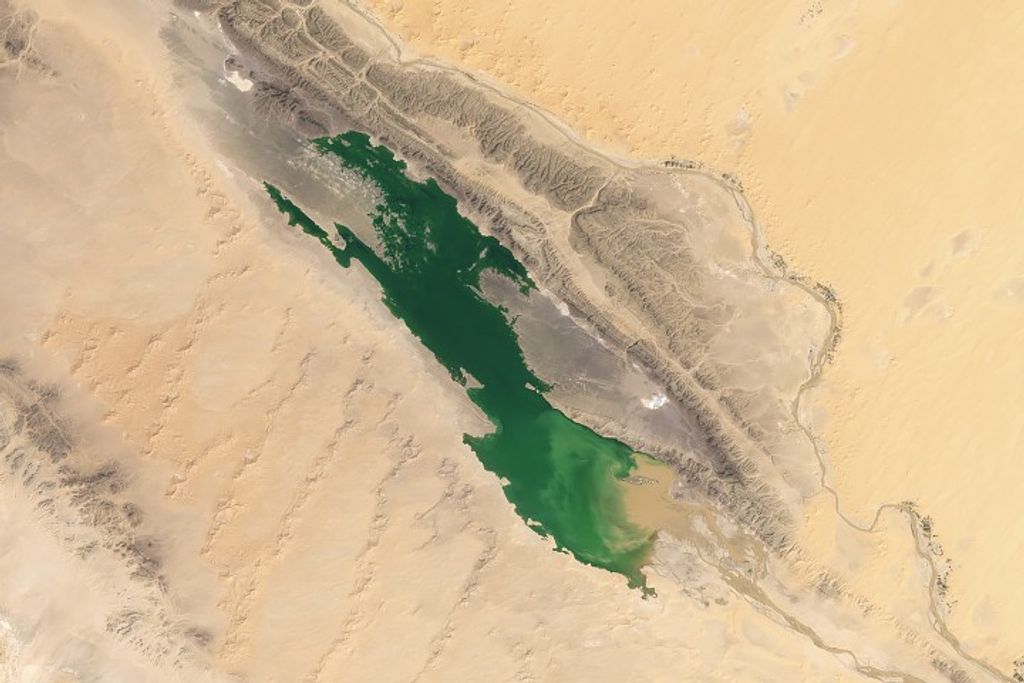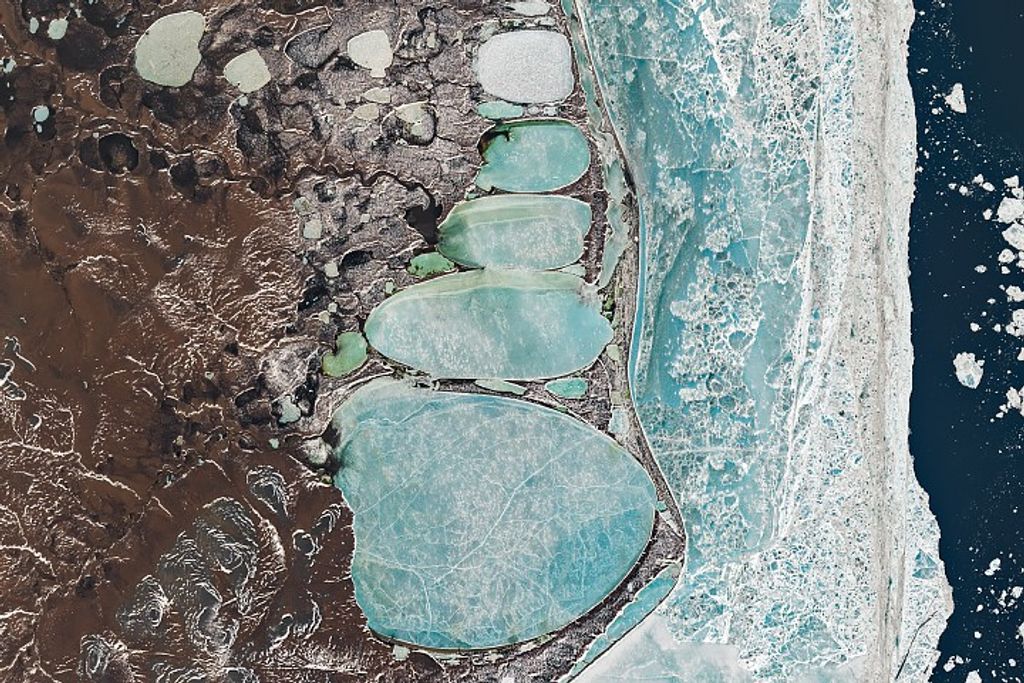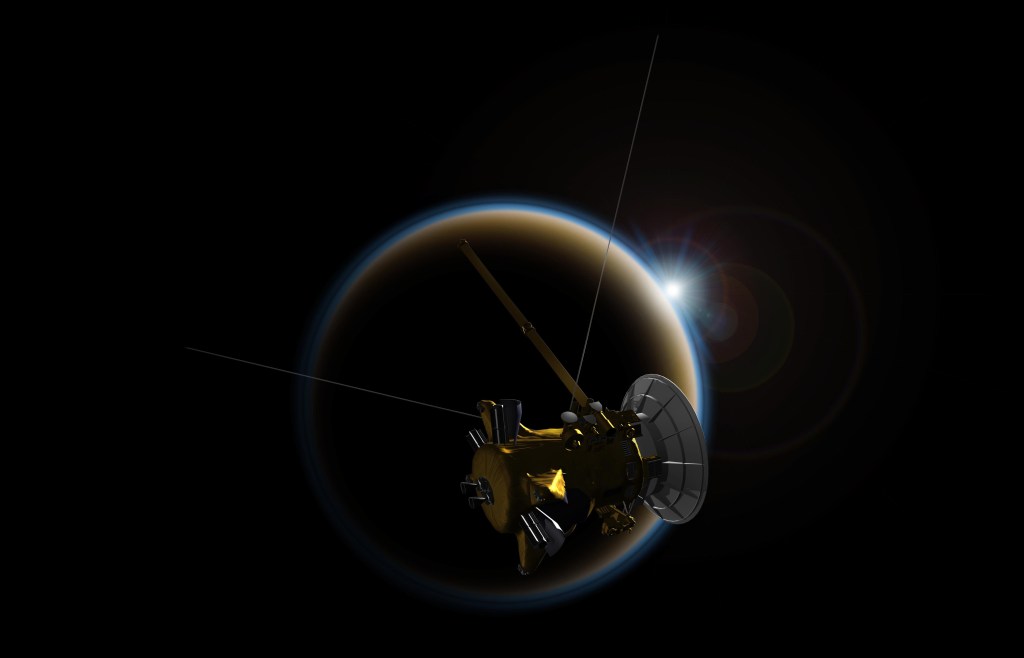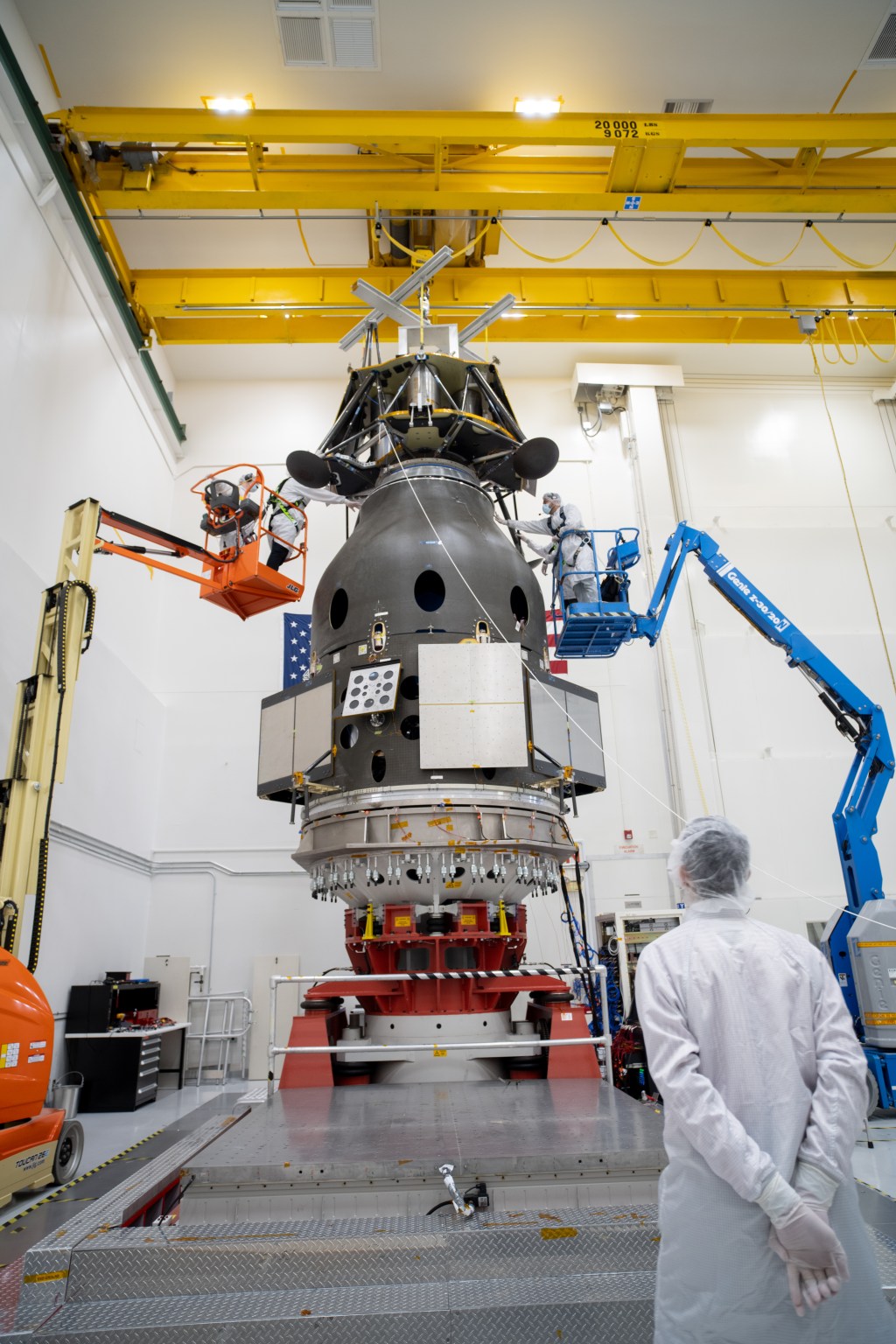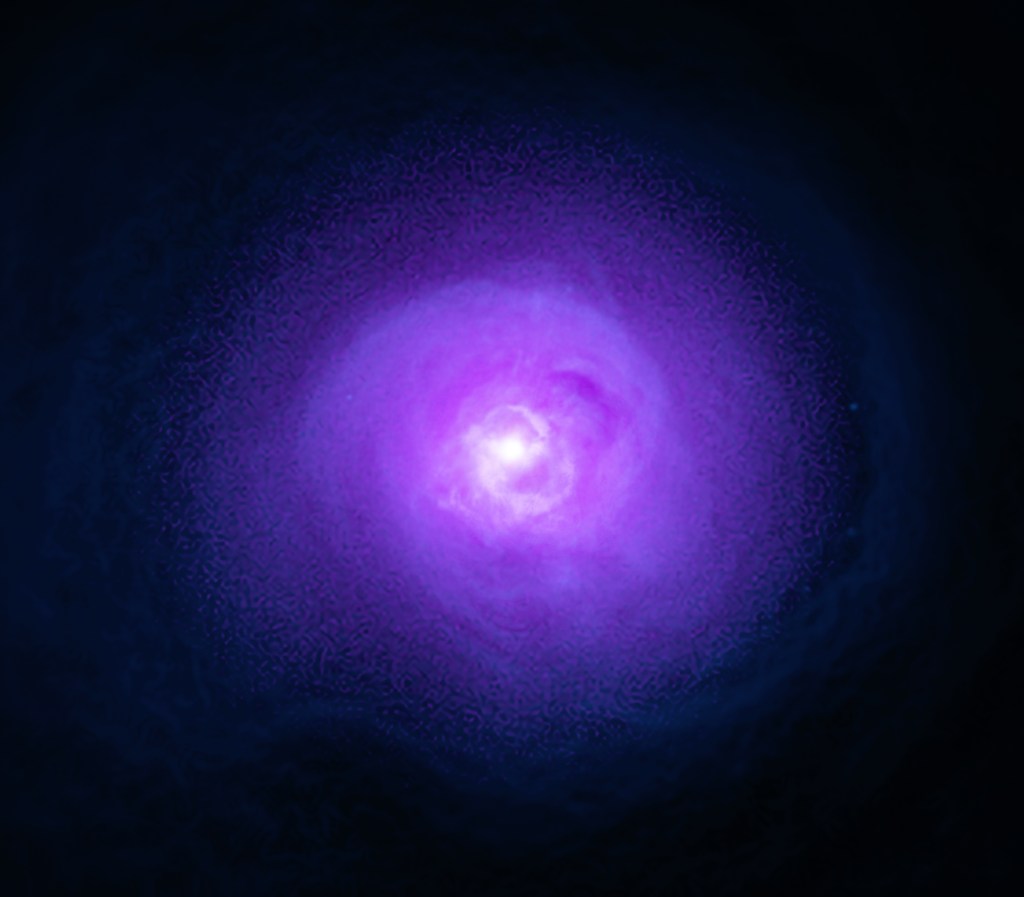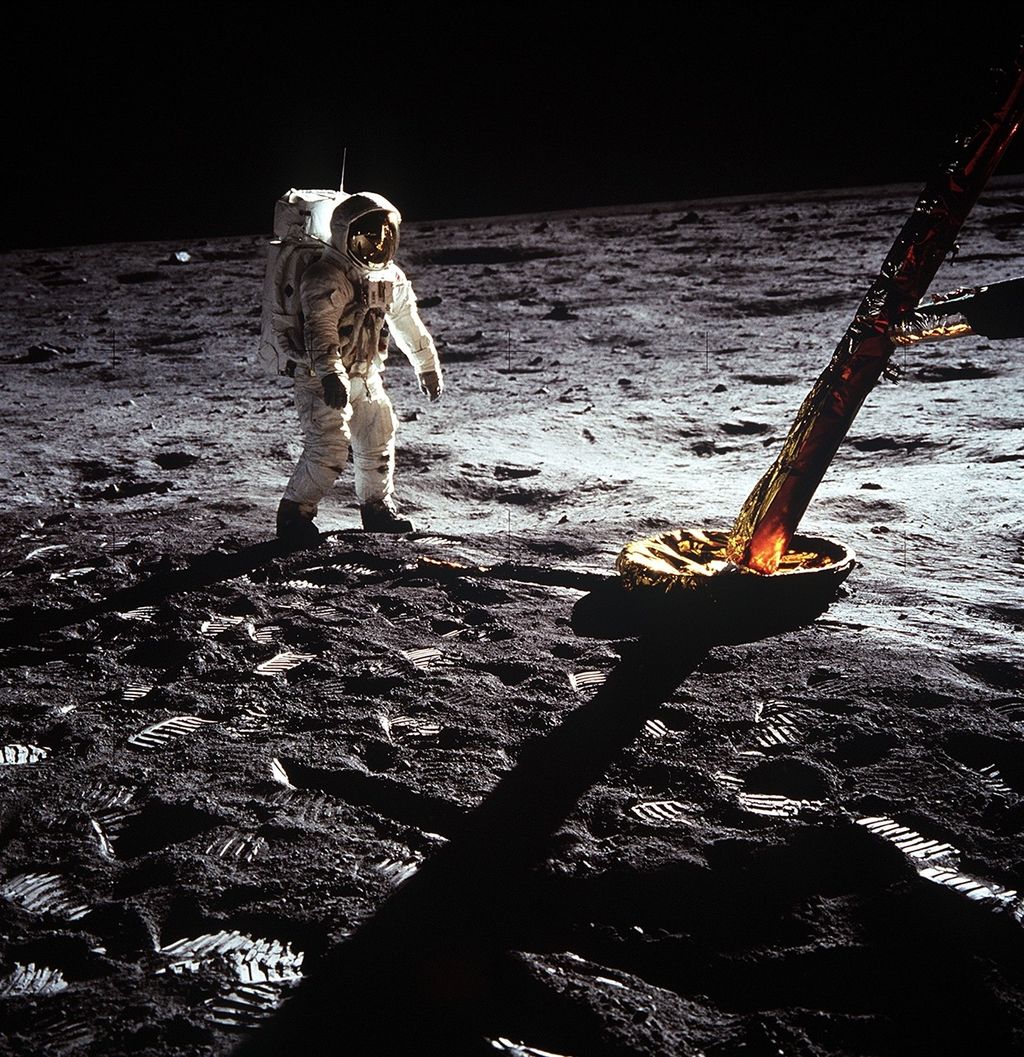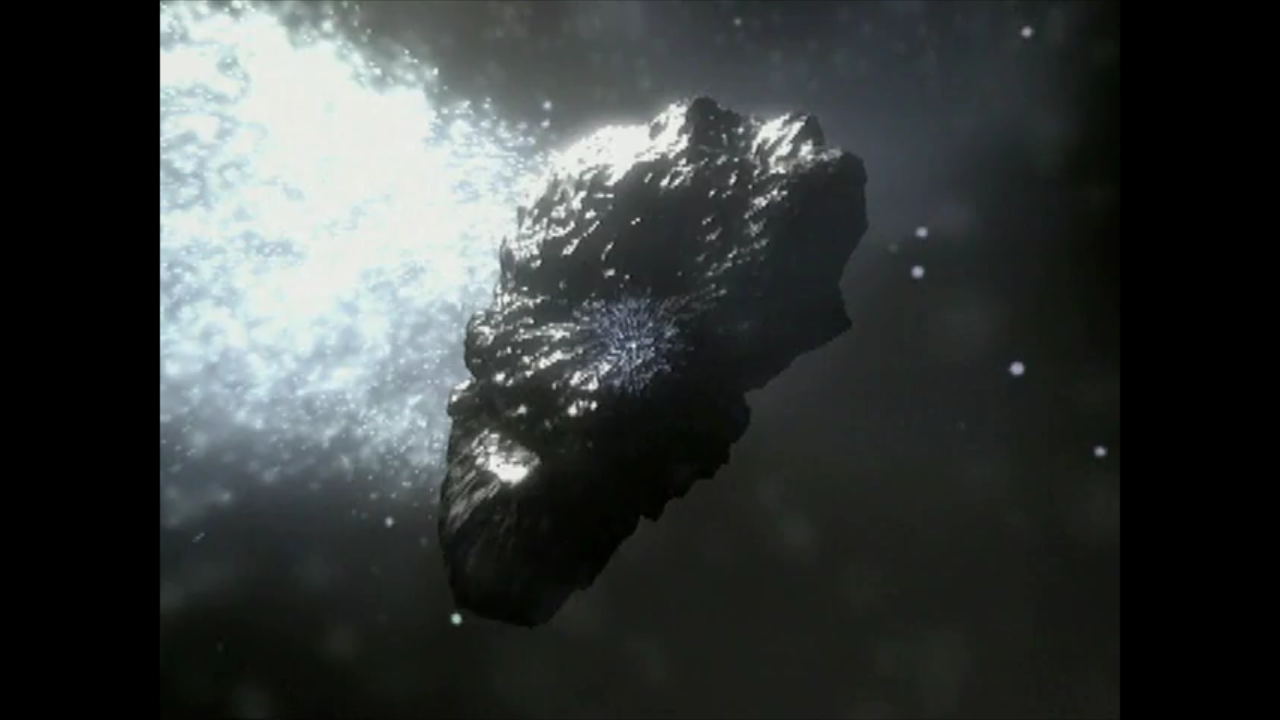1 min read
Outburst from Comet Tempel 1, the Target of Deep Impact Space Probe
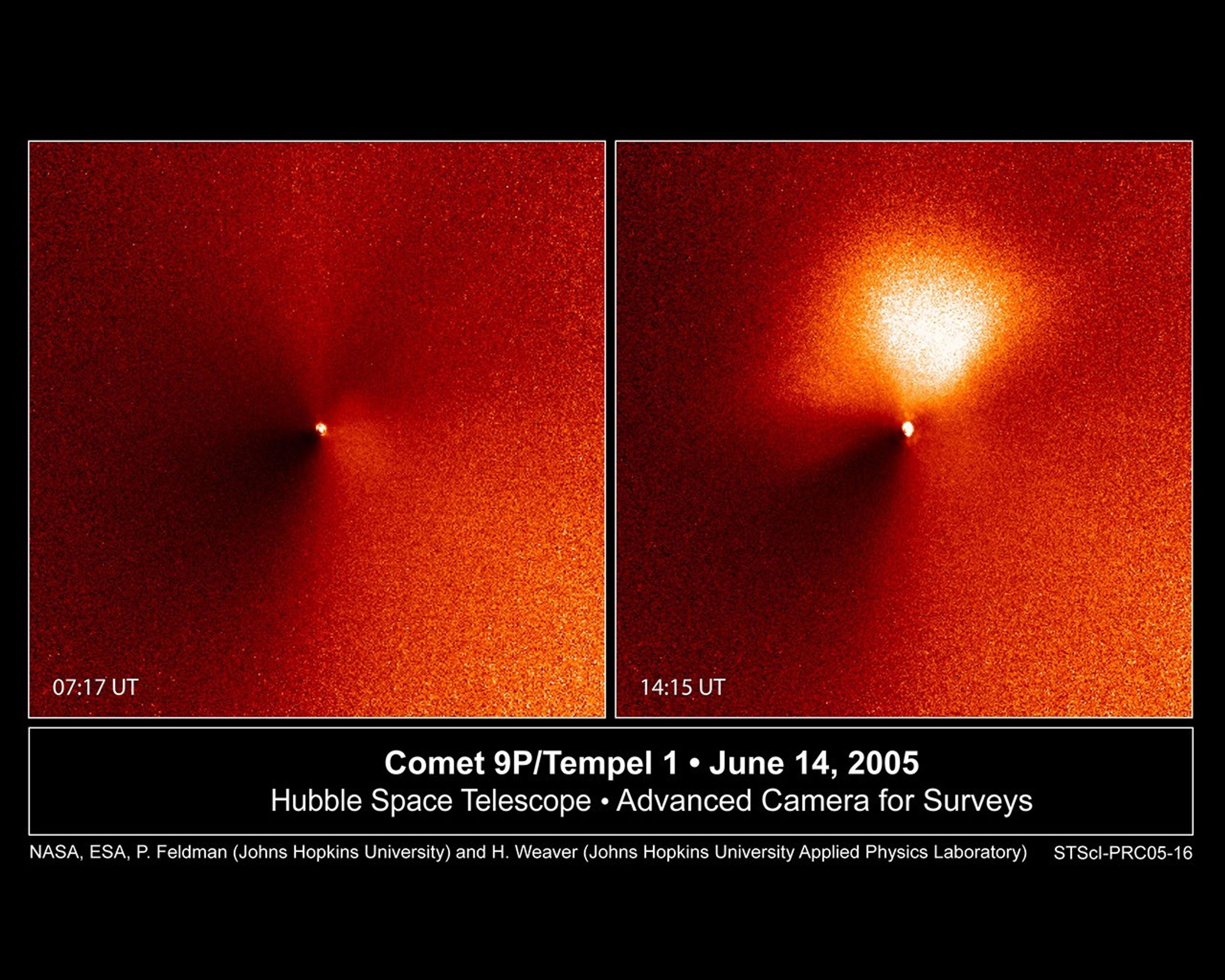
In a dress rehearsal for the rendezvous between NASA's Deep Impact spacecraft and comet 9P/Tempel 1, the Hubble Space Telescope captured dramatic images of a new jet of dust streaming from the icy comet.
The images are a reminder that Tempel 1's icy nucleus, roughly half the size of Manhattan, is dynamic and volatile. Astronomers hope the eruption of dust seen in these observations is a preview of the fireworks that may come July 4, when a probe from the Deep Impact spacecraft will slam into the comet, possibly blasting off material and giving rise to a similar dust plume.
These observations demonstrate that Hubble's sharp "eye" can see exquisite details of the comet's temperamental activities. The Earth-orbiting observatory was 75 million miles away from the comet when these images were taken by the Advanced Camera for Surveys' High Resolution Camera. The telescope's views complement close-up images being taken by cameras aboard Deep Impact, which is speeding toward the comet.
The two images, taken seven hours apart on June 14, show Tempel 1 and its new jet. The image at left, taken at 2:17 a.m. (EDT), is a view of the comet before the outburst. The bright dot is light reflecting from the comet's nucleus, which appears star-like in these images because it is too small even for Hubble to resolve. The nucleus, a potato-shaped object, is 8.7 miles (14 kilometers) wide and 2.5 miles (4 kilometers) long. Hubble's viewing the nucleus is as difficult as someone trying to spot a potato in Salt Lake City from New York City.
The photo at right, snapped at 9:15 a.m. (EDT), reveals the jet [the bright fan-shaped area]. The jet extends about 1,400 miles (2,200 kilometers), which is roughly half the distance across the U.S. It is pointing in the direction of the Sun. Comets frequently show outbursts in activity, but astronomers still don't know exactly why they occur. Tempel 1 has been moving closer to the Sun, and perhaps the increasing heat opened up a crack in the comet's dark, crusty surface. Dust and gas trapped beneath the surface could then spew out of the crack, forming a jet. Or, perhaps a portion of the crust itself was lifted off the nucleus by the pressure of heated gases beneath the surface. This porous crust might then crumble into small dust particles shortly after leaving the nucleus, producing a fan-shaped coma on the sunward side. Whatever the cause, the new feature may not last for long.
Astronomers hope that the July 4 collision will unleash more primordial material trapped inside the comet, which formed billions of years ago. Comets are thought to be "dirty snowballs," porous agglomerates of ice and rock that dwell in the frigid outer boundaries of our solar system. Periodically, they make their journey into the inner solar system as they loop around the Sun.
The contrast in these images has been enhanced to highlight the brightness of the new jet.
About the Object
- DistanceDistanceThe physical distance from Earth to the astronomical object. Distances within our solar system are usually measured in Astronomical Units (AU). Distances between stars are usually measured in light-years. Interstellar distances can also be measured in parsecs.The Comet was approximately 0.8AU (120 million km, 74 million miles) from Earth and approximately 1.5AU (224 million km, 139 million miles) from the Sun at the time of these exposures
- DimensionsDimensionsThe physical size of the object or the apparent angle it subtends on the sky.The comet's nucleus is approximately 5-6 km (3-4 mi) in diameter. It is not resolved in the HST images. The image is 10 arcseconds wide, approximately 6100 km (3800 mi) at the distance to the comet.
About the Data
- Data DescriptionData DescriptionProposal: A description of the observations, their scientific justification, and the links to the data available in the science archive.
Science Team: The astronomers who planned the observations and analyzed the data. "PI" refers to the Principal Investigator.The Hubble image was created from HST data from proposals 10144: P. Feldman (Johns Hopkins University), M. A'Hearn (University of Maryland), M. Belton (National Optical Astronomy Observatories), K. Meech (University of Hawaii), H. Weaver (Johns Hopkins University Applied Physics Laboratory). - InstrumentInstrumentThe science instrument used to produce the data.HST>ACS/HRC
- Exposure DatesExposure DatesThe date(s) that the telescope made its observations and the total exposure time.June 14, 2005, Exposure Time: 10 minutes
- FiltersFiltersThe camera filters that were used in the science observations.F606W (V)
- Object NameObject NameA name or catalog number that astronomers use to identify an astronomical object.9P/Tempel 1
- Object DescriptionObject DescriptionThe type of astronomical object.Comet
- Release DateJune 27, 2005
- Science ReleaseHubble Captures Outburst from Comet Targeted By Deep Impact
- Credit

Related Images & Videos

Transition Sequence of Dust Jet
Transition between two images taken seven hours apart, a preview of the fireworks that may come July 4, when a probe from the Deep Impact spacecraft slams into the comet and may blast off a plume of dust material. The first image was taken June 14, 2005 at 2:17 am EDT and the...
Share
Details
Claire Andreoli
NASA’s Goddard Space Flight Center
Greenbelt, Maryland
claire.andreoli@nasa.gov


